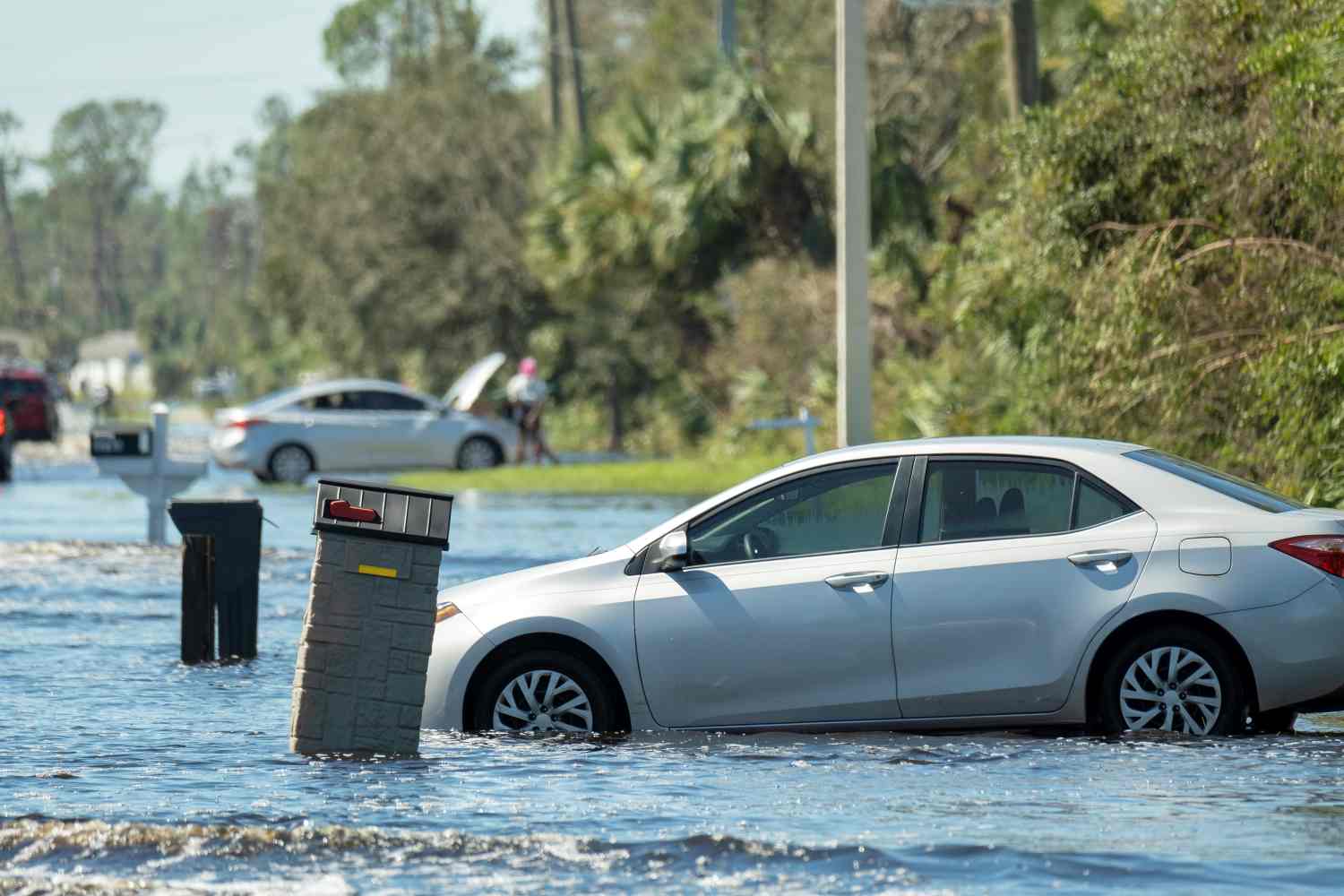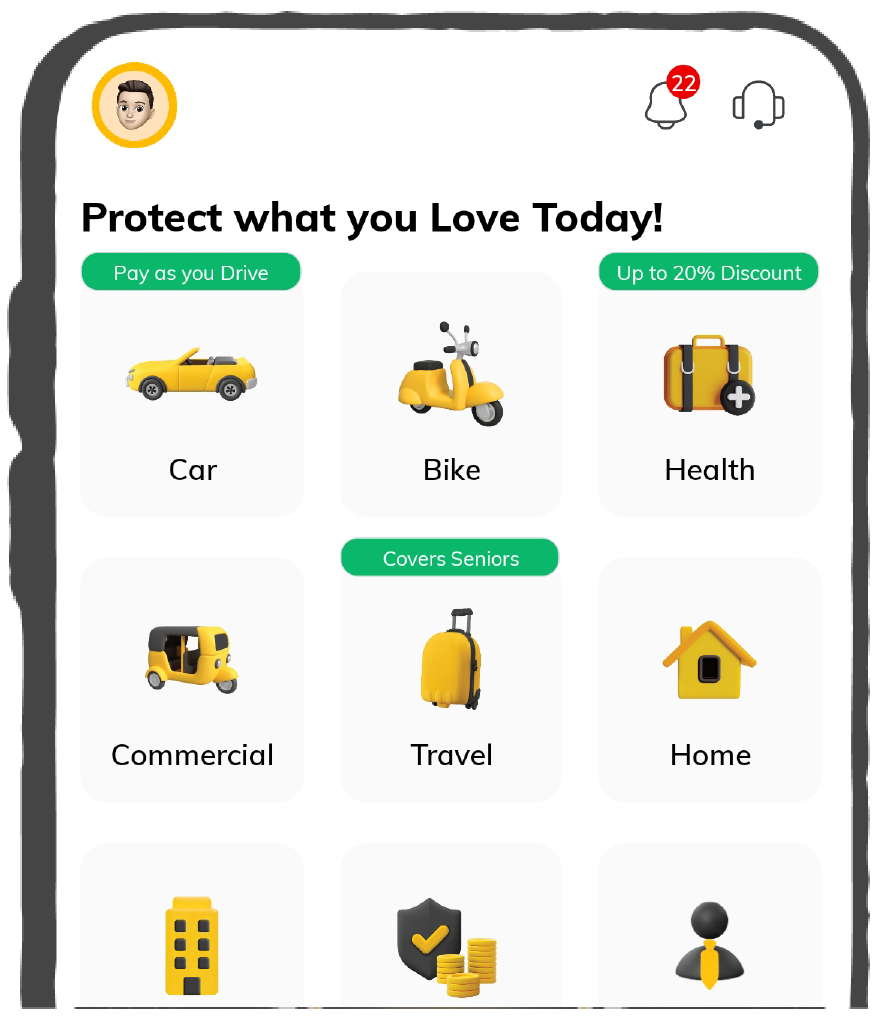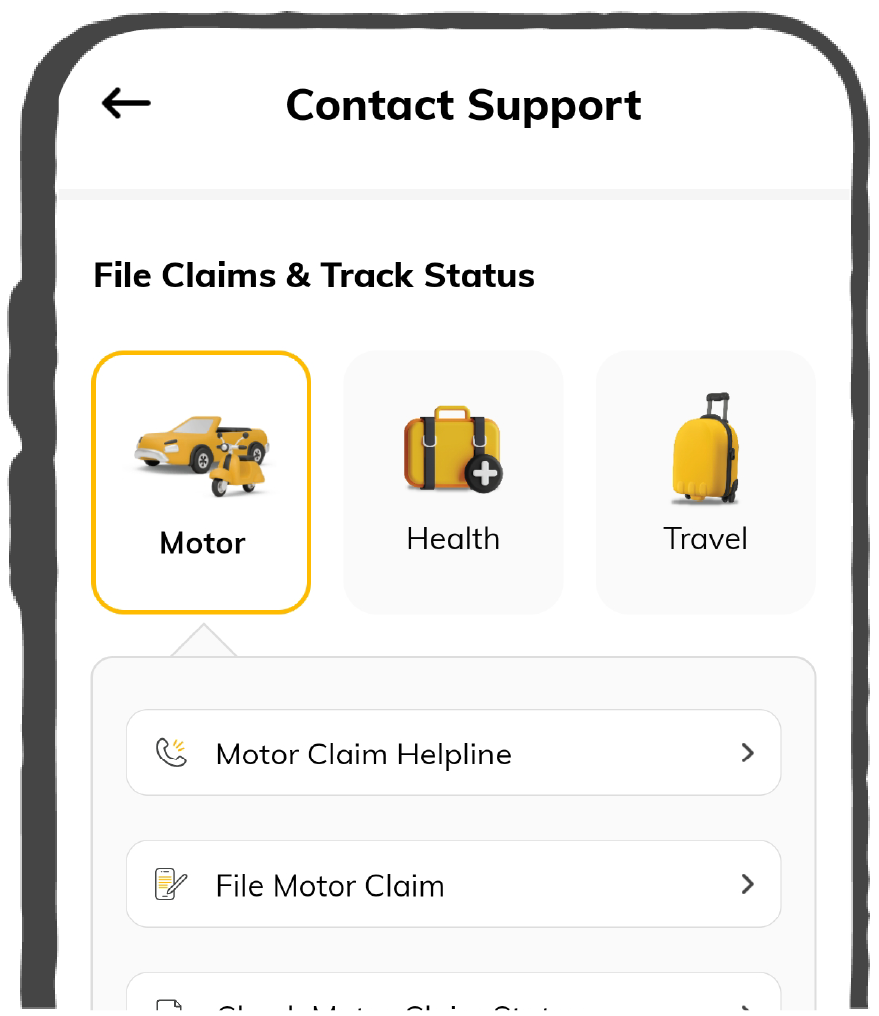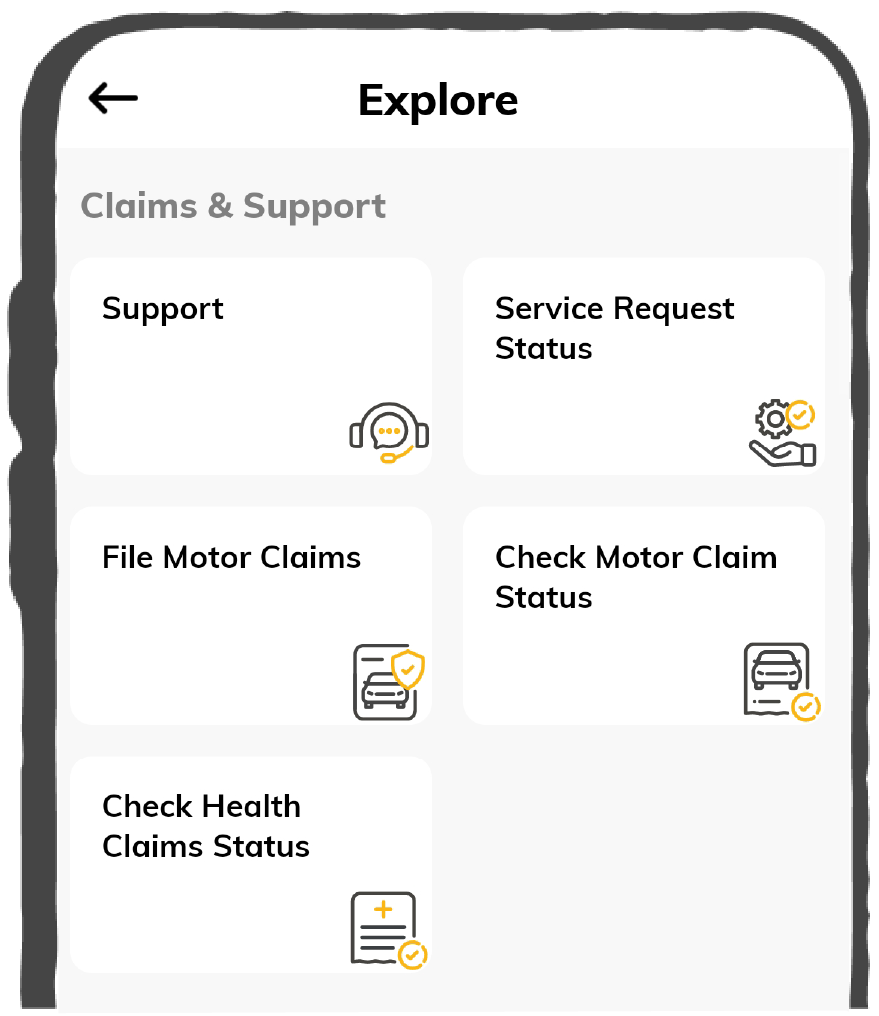Car Insurance Online, Up to 90% Off
9000+
Cashless Garages
2900 Crore+
Paid-in Claims
1.2 Cr+
Policies Sold
I agree to the Terms & Conditions
Buy Online for Huge Savings

Car insurance Online, Up to 90% Discount
It's a Brand New Car
9000+
Cashless Garages
2900 Crore+
Paid-in Claims
1.2 Cr+
Policies Sold
Does Car Insurance Cover Flood Damage?

With increasing flash floods every year, insuring your car with a car insurance policy is a must. Insurance acts like a safety shield against any damage caused by natural calamities, particularly floods. There are a variety of coverages for your car to save you money during such unforeseen events.
However, knowing whether your car insurance covers flood damage can help you access the insurance more promptly. This article guides you in accessing fully comprehensive flood damage car insurance. This will cover all your losses from floods to all other calamities.

Table of Contents

What is Flood Damage and Its Impact on Vehicles?
The flood can cause severe damage to your vehicles. The engine parts and gearbox may spoil in waterlogging conditions, as the flood water carries debris and other contaminants. The flood water can also cause an electric short circuit in your vehicle. It may lead to a total shutdown of the electrical components in your car.
Even after draining the water, the moisture in the car may lead to mould growth, which can pose health risks for the passengers. The humidity also leads to rusting the car's components, including doors, upholstery, and engines. This can damage the vehicle's appearance, cause engine failure, cause oil leakage issues, and cause hydrostatic lock or starvation of lubricants.
Importance of Insurance Coverage During Natural Disasters
Insurance coverage acts as a safety shield against natural disasters and covers most losses during disasters. Here's a breakdown of the importance of insurance coverage and how it saves your money during natural disasters:
Financial Aid
In distress situations like floods or any other natural disasters, the insurance comes as economic aid to cover most of your losses incurred. Therefore, it helps individuals and businesses reduce financial troubles.
Speedy Recovery
The immediate financial aid provided by insurance helps restart the stalled business and individual work without any time, reducing the economic strains due to the inactivities.
Peace of Mind
Knowing you are insured against losses can make you stress-free, giving you peace of mind and a peaceful driving experience. Reducing your financial worries can also help you improve your productivity.
Risk Management
As your risks are shared among the insurance companies, you won't be left alone in grave situations like natural disasters. This helps diversify your risks and reduces your economic burdens.
Does Car Insurance Cover Flood Damage?
The insurance coverage for flood damage depends on the type of policy you opted for during the policy purchase. In the case of the third-party car insurance policy, the flood-related damages are not covered, as it only covers the damage caused by the third party. The comprehensive insurance policy covers almost all the damages caused by natural disasters.
Despite that, the damage caused to the engine may not be covered even by the most fully comprehensive insurance policies, so check the terms thoroughly when choosing an insurance policy. In such a case, one can opt for add-ons for enhanced coverage for the engine and for the other parts not covered by insurance.
Coverage Under Comprehensive Car Insurance Policies
Comprehensive car insurance policies cover the car from damages caused by natural calamities and other unforeseen events. Below are different types of damages which are covered by the comprehensive insurance policy:
- Accidental damages that are caused to your car.
- Damages that occur due to natural calamities, including floods.
- Damages caused due to fire accidents.
- Damages incurred in the car due to the third party property or vehicle.
- Injury or death caused by unforeseen events.
- Personal loss or theft of the insured vehicle.
- Damage occurred in the car due to transportation issues.
Exclusions In Policies Related To Flood Damage
Understanding the exclusions in policies helps you make informed decisions and avoid issues during claims. Following are the lists which are not covered by the comprehensive insurance policies:
- Vehicles parked in known flood-prone areas.
- Damage caused while driving under the influence of an intoxicating substance.
- Modifications of accessories that are not covered in the policy.
- Claims that are filed after the set period without valid proof.
- Pre-existing damage was not disclosed before the policy began.
- Damage occurring due to wear and tear of parts or mechanical failure.
Types of Flood Damages Covered By Insurance
The insurance covers different types of damages caused by the flood. Here is a table representing the damage category and its coverage:
Common Claim Scenarios for Flood-Damaged Vehicles
Here are the different common claim scenarios in which the insurance can be claimed for the flood-damaged vehicles:
Total Loss Claims
If the total repair cost exceeds the car's insured value, the insurers declare such claims as the total loss. This is so because there won't be any insured amount left with the insurer.
Partial Damage Claims
Claims made for repairable damages, such as parts like the engine, interior, or electrical systems. These are minor and partial as they cause partial damage to the vehicles.
Towing Assistance Claims
If the vehicle becomes inoperable due to the ingression of flood water in the car. The towing claim can be made to cover the cost of taking the vehicle to the garage.
Emergency Repair Claims
Coverage for immediate repairs to prevent further damage after a flood. This acts as first aid to repair the damages that need immediate attention and prevent complications.
Car Insurance Add-Ons to Enhance Flood Coverage
Here are specific add-ons you can opt for while you are purchasing the insurance policy to enhance your coverage for the damage:
Steps to File a Claim for Flood-Damaged Cars
Insurance is claimed systematically. By following the steps given below, you can claim insurance for flood-damaged cars:
Step 1
The initial step in initiating the claiming process is to contact the insurance company where you purchased the policy.
Step 2
Convey the insurance company as much information as possible. You can even mail them, if necessary, with proofs like photographs.
Step 3
Once the insurer has provided all the necessary proofs and documents, the insurance company will issue a Claim Registration Number.
Step 4
The insurer will notify you within a specific time when your car is picked up from your home and towed to the nearest garage.
Step 5
The insurer will send the surveyor to assess the damage caused. He also calculates the amount to be paid to you after considering the wear and tear of the parts.
Step 6
Once both parties have addressed claim issues, the claim approval sheet should be signed. Get a copy for future reference.
Step 7
Thoroughly check the car for the quality of the repair done. Once you are satisfied, pay the remaining amount apart from the insurer.
What are the Documents Required for Claim Submission?
Submitting the appropriate documents is necessary to ensure that the claim process is smooth and speedy. Here are the documents required for claim submission:
- Car insurance policy document or cover note.
- A filled insurance claim form from the insurance company.
- A copy of the valid driving licence.
- The vehicle registration certificate.
- The latest pollution under control certificate.
- Proof of your address, such as an Aadhaar or PAN card.
- A copy of your recent bank transaction statement.
- A copy of FIR in case of third-party involvement.
Tips for Faster Approval of Claims
Ensuring faster approval of the claim process leads to faster claim sanctioning and a smooth repair process. Here are a few tips to follow to get the claim approval faster:
- Report the claim promptly to avoid delay in processing.
- Ensure that all details submitted reconcile with your records.
- Look for repairs in garages that your insurance covers to make them less messy.
- Ensure your policy covers natural calamities like floods.
- Contact the claims officer regularly in person/ by mail for instant approval.
How to Protect Your Vehicles During Floods?
Safeguarding your car during the flood with proper measures and precautions can reduce the damage caused by flood and associated losses. Here are some tips that can help you protect your vehicles during floods:
Avoid Parking in Low-Lying Areas
Always try to park in an elevated area. This helps protect your car from flood water, reducing the damage caused by the flood to the vehicle.
Use Waterproof Covers
A waterproof cover stops water from moving into the typical electrical component, preventing a short circuit in the car. This helps prevent out-of-pocket expenditures.
Disconnect the Battery
Stay updated about the weather pattern in your region. If you find the flood inevitable, disconnect the battery from the car. This prevents short circuits in the vehicle.
Stay Away from Floodwater
Do not try to drive your vehicle in the flooded area. If you feel that the region is flooded, try to park your car in an elevated location. Driving in flooded areas leads to the ingress of water into the vehicle.
Seal Openings
Close the window, door, and seals as tightly as possible. This helps prevent water from ingressing into the vehicle, protecting the upholstery and reducing damage.
Regular Maintenance
Monitoring and ensuring the car's components, such as the engine, doors, and windows, before the flood season enables the reduction of loss or damage to such parts.
Best Practices for Driving in Submerged Areas
You must always try to avoid driving your vehicle in the submerged areas. However, in specific unavoidable situations, you can follow several tips to reduce the damage to your car, such as:
Avoid Driving Through Flooded Streets
Avoid driving through flooded streets. Shallow waters can cause a loss of control and cause damage to the engine.
Drive Slowly And Steadily
While driving through water, keep a steady speed without jerking to accelerate or decelerate. This helps prevent water from ingressing into the car.
Keep a Distance From Other Vehicles
Maintain a proper distance from other cars. It reduces the chance of debris hitting your vehicle, and the damage is also reduced.
Know Your Vehicle's Water Clearance
Check the water level on other vehicles to determine the water depth; do not attempt to cross waters beyond your car's clearance.
Test Brakes After Crossing Water
If you cross over floodwaters, ease off the brakes a little to dry them. Driving without drying leads to loose break conditions.
What are the Cost Implications of Flood Damage?
The cost implications of flood damage are relatively higher. However, this depends upon the seriousness of the damage. Some of the most important implications are given below:
- Water entering the engine may cause it to fail, which can cost more to repair or replace.
- Water ingress may cause short circuits and damage to components, such as the car's electronic control module, thus increasing the repair cost.
- Ingress of water also damages the upholstery, carpets, and other interior parts. It might need replacement or severe cleaning, thus leading to higher expenditure.
- Seepage into the transmission and gearbox can cause a complete vehicle breakdown or failure, which can result in losses to insurers due to replacement.
- Flooding may lead to the car stalling completely. In such a case, towing the car to the garage for repair is necessary, which increases the labour cost.
What is the Impact of Claims on Insurance Premiums?
Insurance companies analyse the premium based on your previous claims. The effect of claims on insurance premiums is as follows:
- Filing for flood damage might mean higher future premiums because your insurer will likely perceive you as a more significant risk.
- Moreover, repetitive claims or a great damages payout can massively elevate your annual insurance premiums.
- The insurer might offer no-claim bonuses, but these could only be recovered if you needed to file frequent claims.
The Role of Add-ons In Reducing Repair Expenses
Add-ons in car insurance significantly help reduce the expenses of repairing or replacing car parts. Key roles of add-ons in reducing repair expenses include:
- The add-ons reduce the damage repair cost because all-inclusive or flood-specific add-ons encompass more damage.
- An engine damage add-on helps repair and replace the engine in case of failure. Thus saving the out-of-pocket expenditure.
- The zero depreciation cover helps exclude the components' wear and tear while calculating the claim amount.
- Although add-ons are costlier, they provide better coverage, as repair costs are typically saved on damages resulting from flooding.
In conclusion, car insurance ensures timely financial support to cover your car against flood and other damage. However, choosing the proper and ideal insurance coverage can be daunting. Comprehensive insurance coverage covers almost all damage to your car. However, its premiums will be costlier to bear.
Contrary to this, third-party insurance is less expensive. However, it covers fewer components. Hence, a proper selection of insurance and an appropriate understanding of your policy will have to be made to ensure an effective claim.
















